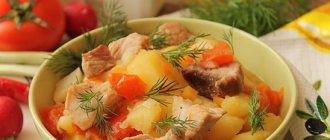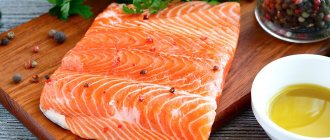Curd pudding “Surprise from Mom”
Curd pudding “Surprise from Mom” 200 g cottage cheese, 1 egg, 50 ml cream, 2 tbsp. sugar, 2 tbsp. semolina, 10 g butter, several berries of any kind
Grind the yolk with sugar, rub the cottage cheese through a sieve, beat the white with a whisk. Add semolina and cottage cheese to the yolk and stir. Add the beaten egg white and mix gently. Grease the mold with butter, transfer the curd mass, put berries inside, and a piece of butter on top. Bake in a preheated oven for 25–30 minutes.
Photo recipes “For schoolchildren”
The dynamism of everyday work dictates its own rules. Not only we adults, but also our children are accustomed to living at a fast pace. A particularly intense load falls on the shoulders of tireless schoolchildren, who after school rush to clubs and sections, meet with tutors, and prepare homework. There is nothing to be done; the price of success in the modern world is quite high. However, a reasonable parent can do a lot for a comfortable life for their child, and the simplest thing is to take care of his healthy diet into his own safe hands.
Healthy breakfasts for schoolchildren
It's no secret that the food a child receives during a big break is very far from ideal. Let's leave school breakfasts to the conscience of public catering and think about what an individual mother can do for her child.
There are a lot of options, it all depends on your child’s taste preferences and morning food set. Nutritionists unconditionally give first place to oatmeal, rich in carbohydrates, proteins and minerals. If your child loves porridge, then you are incredibly lucky and, in addition to oatmeal, you can cook millet, rice, barley porridge and even buckwheat in the morning. Other children are very happy in the morning with a fluffy omelette or fragrant scrambled eggs with pieces of bacon or potatoes.
However, there is a category of children who cannot eat anything at all in the morning. For such picky eaters, you can brew invigorating cocoa, which perfectly activates brain activity. A milkshake with banana is also suitable for the same purposes.
Be careful when eating muesli and breakfast cereals as these foods are high in sugar and saturated fat.
Many people associate school breakfasts with the word sandwich. If you use a creative approach, such food can also be very tasty and healthy. For example, white bread can be replaced with grain bread, sausage can be abandoned in favor of boiled meat or chicken, and some herbs and vegetables can be added.
Snacks
The workload at school can be colossal, so a nutritious snack in your schoolbag will do absolutely no harm to your child. Of course, we forget about chips and chocolate bars, but a bag of unroasted nuts, dried fruit, crackers or “proper” sandwiches will do a good job on “hard” days.
School lunches
The phrase “a hot lunch for every schoolchild” has not lost its relevance today. However, the school canteen is a very noisy and restless place. A student receives a real lunch, prepared with love, only at home.
The foundation of any quality meal is soup. This unique dish helps improve metabolism in the child’s body. The use of soups is especially recommended in the cold off-season and winter.
The second course should, if possible, include meat products. It is better if they are steamed or in the oven, and the meat will be served as a side dish not with your favorite potatoes or pasta, but with vegetables or rice.
It is also important to remember that children need to be fed seasonal foods, and then there will be no problems with excess weight.
When a child comes home from school, having lived a day full of stress and anxiety, the first thing he does is go to the kitchen. Your goal is to develop a great habit of regularly preparing home-cooked meals for your student, which will keep him healthy for years to come.
Sandwich “Fisherman's Catch”
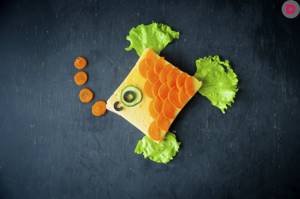
Sandwich “Fisherman's Catch” 2 slices of white bread, 1 tbsp. cream cheese, boiled red fish fillet, 2-3 sprigs of parsley, 2 black olives
Spread the cream cheese on the bread and place the fish-shaped fillet on top. Cut the olives into half rings, add the scales and eyes. Make fins from parsley leaves.
Rice charlotte “For an excellent student”
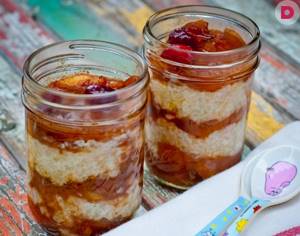
Rice charlotte “For an excellent student” 100 g rice, 2 apples, 1 egg, 2 tbsp. sugar, 20 g butter, vegetable oil
Boil the rice until tender, rinse and cool. Divide the egg into yolk and white. Add the yolk, sugar and half the butter to the rice. Beat the whites until foamy and gently fold into the rice mixture. Cut the apples into slices. Grease a baking dish with vegetable oil, place half of the rice mixture, a layer of apples and the remaining rice. Drizzle with melted butter. Bake in a well-heated oven for 20-25 minutes.
Who will eat for free?
On September 1, one of the main provisions of the law comes into force - all students in grades 1-4 in state and municipal schools must be provided with a hot meal at least once a day. The menu includes a hot dish, not including tea or other hot drinks. According to SanPiN, breakfast should contain, depending on the age of the student, 12-16 grams of protein, the same number of grams of fat and 60-80 grams of carbohydrates.
If children study in the second shift, they will be fed lunch. You cannot replace it for breakfast, as it should be more satisfying - contain 20-25 grams of protein, the same amount of fat and 80-100 grams of carbohydrates. Lunch includes an appetizer (salad or fresh vegetables), hot first and second courses and a drink. It is not necessary to give fruits and berries, but it is advisable.
Previously, regions and municipalities could organize free meals only at their own expense, and in most regions they were provided exclusively to beneficiaries, for example, children from large, low-income families, orphans or those with disabilities. To ensure that there is enough money for all primary schoolchildren, regardless of social status, the new law established that lunches will be paid for from budgets of various levels, including the federal one. At the same time, the law stipulates that the program should be implemented not at once, but in stages. “Primary school students will be provided with free hot meals in schools that are technically ready for this from September 1, 2020. And throughout the country - no later than September 1, 2023. This is what the president ordered,” explained Larisa Tutova.
Creamy oatmeal “Fizkult-hello!”
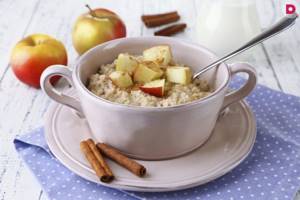
Creamy oatmeal “Fizkult-hello!” 1 tbsp. milk, 50 ml cream, 3 tbsp. oatmeal, 2 tsp. sugar, half an apple, a pear, a banana and a peach, 4 walnuts
Cook oatmeal, cool, add chopped fruits and chopped nuts.
Chocolate manna "Study for A's"
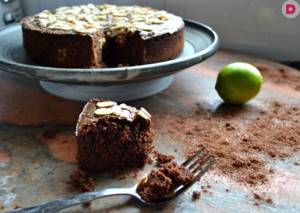
Chocolate manna "Study for A's" 250 ml kefir, 1 tbsp. semolina, 50 g melted butter, 2-3 tbsp. sugar, 0.5 tsp. soda, 2 tbsp. cocoa, a handful of any red berries, mint
Add soda to kefir and stir. Add melted butter, sugar, cocoa and semolina, stir well and leave for 30 minutes. Grease the pan with oil, transfer the mixture and bake for 25–30 minutes at 180°C. Cool the manna, place the number “5” on top of the berries and garnish with mint.
LiveInternetLiveInternet
Sunday, September 02, 2012 20:53 + in the quote book What to give and how to pack a child’s breakfast for school. parents online Important: At least 20-30 minutes should pass from waking up to breakfast. The child must have time to get hungry; Breakfast at home is a must. It's best when it consists of two dishes. For example: porridge + tea, cottage cheese + milk, boiled egg + coffee drink, as well as sandwiches with cheese or boiled sausage; A hot breakfast is required at school. If for some reason hot meals are not organized, then the child must be given it with him; Lunch should consist of three to four courses. For example: soup, second course (meat or fish + vegetable salad + side dish), third course - compote, jelly or tea. For an afternoon snack, children need: fruit, kefir, milk, tea with baked goods. Children need dinner no later than 1-1.5 hours before bedtime. Dinner should not be very rich, as sleep with a full stomach will be restless. Every day a child’s diet should include: meat, butter, milk, bread, cereals, vegetables and fruits. 2-3 times a week it is necessary to give: fish eggs sour cream cottage cheese cheese If the child does not like the food in the canteen, it is better to replace it with homemade food, it can be: pita sandwiches with meat, cheese, vegetables and herbs pies with meat or vegetable filling fruits, nuts, dried fruit drinking yogurt, hot tea or cocoa in a thermos To pack your breakfast with you, use: Plastic containers. In them, food will not lose its primary form and will not stain textbooks; Cling film. Breakfast packed in film is hygienic and convenient. In such a bag you can bite a sandwich without touching it, holding only the film; Thermoses, flasks. You should not take it with you to school: foods that spoil quickly can cause poisoning; foods that are difficult to eat (you need a spoon, the lid doesn’t close well, etc.) sweets - the child, when he feels the first hunger, will immediately snack on a sweet bar, and the school lunch will only taste it. Parents, don’t forget! Monitor what the child eats at school and whether he eats at all. To begin with, simply ask what they were given today or what he ate today. Regularly give money for lunches, because the child must eat at least 4 times a day; Check the school canteen menu. But remember that the canteen should only feed the child a tasty, satisfying and hot lunch, and it’s up to the parents to provide him with pickles with the right amount of vitamins and minerals; Put the child to bed and wake up early so that in the morning he has time to wash, get dressed, and have breakfast immediately before leaving for school; Remind your child to wash their hands before eating. Wet wipes are an alternative. scaramush.ru Nevsedoma.com.ua Packaging - Japanese bento Nakhodka - Online
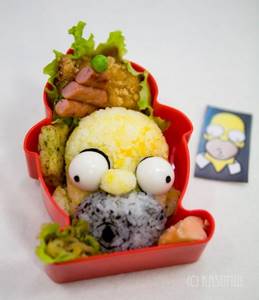
A series of messages “back to school soon”:
Part 1 - School of multiplication methods for children 7-12 years old Part 2 - Nursery rhymes ... Part 29 - Flash drive "Learning letters" Part 30 - Rules of the Russian language in pictures. Part 31 - What to give and how to pack your child’s breakfast for school. Thanks to Yandex! Part 32 - Sew a Backpack. Part 33 - Preparing for school. Mathematics, tests for preschoolers. ... Part 44 - Children's books Part 45 - "ABC in Kartinkh" by Alexandra Benois Part 46 - Illustrations of children's books. The pictures are clickable.
“Children’s” message series:
Part 1 — Semolina cheesecakes. “Bugs” Part 2 — What to give and how to pack a child’s breakfast for school. Thanks to Yandex! Part 3 - Lenten dishes. Part 4 - Books about baby food. Part 5 - Children's menu. Video recipes. Part 6 - Children's menu. By clicking on the pictures Part 7 - 20 fun sandwiches for buffets and baby food.
Cited 3 times
Like share
0
Like
- I liked the post
- Quoted
- 0
Saved
- Add to quote book
- 0
Save to links
Liked
0
Cheesecakes “School Bell”
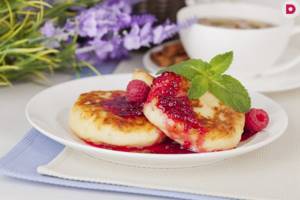
Cheesecakes “School Bell” 100 g cottage cheese, 3–4 tsp. flour, 2 tbsp. rolled oats, 2 tsp. butter, 1 egg, bell-shaped molds - optional, vegetable oil - for frying
Rub the cottage cheese through a sieve, add the egg, oatmeal, flour and mix thoroughly. Gather the mass into a bun and roll it out with a rolling pin into a layer 1 cm thick. Using a mold, cut out the bells (if you don’t have a mold, form balls with your hands), fry in vegetable oil or steam. Serve with honey or sweet berry sauce.
Snack break: what, how and when to give your child to school
About the important and useful
A schoolchild's menu should be varied, healthy and appetizing - all mothers of students know this mantra. Therefore, the school lunch box should contain a set of products that will remain fresh for a long time, allow the youngster to be satisfied and bring health benefits. There are several important principles in assembling such a set:
- Be sure to give your child plain drinking water or unsweetened compote. It is better to avoid carbonated drinks and sweet juices;
- It is better to use whole grain bread rather than white refined flour;
- Children need proteins, so use red meat, including homemade minced meat, as well as fish, eggs, and poultry. As you understand, we don’t even consider sausages, frankfurters and semi-finished products;
- fruits and vegetables should not cause heaviness and fermentation in the stomach. Also remember to wash them before putting them in your lunch box;
- baking is also a good option, but homemade pies should be baked in the oven and not deep-fried;
- dairy products are important in the diet, but it must be taken into account that they are perishable;
- Sometimes you can pamper your child with something sweet: a bar of chocolate, a cookie. During intense mental stress, glucose will not cause harm, only benefit. But keep in mind that the habit of eating sweets threatens to result in extra pounds and metabolic problems.
Designing a menu
We are planning the breakfast menu for the week. This will make it easier to prepare and create a shopping list.
- Drinks are required every day. Give a new bottle or simply wash the bottle and replace the water with fresh water. For variety, you can prepare compote or fruit drink on certain days.
- Wet wipes and handkerchiefs: on average, you need one pack of both for a week.
- Determine for yourself a list of foods that your child loves, that are available to you, and that you can prepare. Organize this list by category: fruit, bread, meat, and so on. That's it - add these products to your regular shopping list.
- Now all that remains is to list the selected dishes by day of the week, maintaining variety. For example, if on Monday you have a turkey sandwich, an apple and oatmeal cookies, then on Tuesday you have pita bread with cottage cheese, carrots and an omelette in the form of a roll of one egg and herbs.
- It will be even more convenient if you think about the filling for the main dish from dinner the day before. For example, if you have fish for dinner on Monday, prepare an additional portion taking into account breakfast: bake, steam, stew in one piece. Nothing will happen to the meat in the refrigerator overnight. Yes, and perhaps few will appreciate maternal exploits with marinated chicken breast early in the morning.
What are we preparing?
And, in fact, the menu itself. For mothers, it is equally important that meals are prepared quickly, are affordable and easy to prepare.
1. Instead of sandwiches, it is better to make sandwiches. This way the filling won’t fall anywhere, and it will be easier for the child to wrap his hands around it. After all, a second piece of bread will add nutrition to the dish. We put protein products in the sandwich: fish, minced meat cutlet, poultry fillet. Between the layers we put cheese, lettuce, cucumbers. But it’s better not to cut tomatoes if you are afraid of the snow-whiteness of your blouse or shirt.
2. Pitas, pizzas with vegetables and meat fillings are an excellent alternative to sandwiches. Add herbs, seafood, cheese and curd masses - in general, use your imagination with your child. But it’s better to avoid sauces; instead of ketchup, it’s good to use sour cream or vegetable smoothies with nuts.
3. Baking. We have already talked about the principles of preparation. You shouldn’t overuse baked goods, but for variety and depending on the child’s taste preferences, this is a good option for the main course. The filling in pies and envelopes can be traditional: from eggs with rice to kulebyaki, or original: cottage cheese with fruit, wheat porridge or berries.
4. Don't forget about grains. And if a child refuses to take porridge with him, then granola is a perfect replacement. Here, too, you can show all your imagination: use dried fruits, nuts, honey, mix different types of cereals and pieces of fresh fruit. A granola bar is a great snack for dessert and is just as nutritious as porridge. Depending on the recipe, the bars can be prepared for the entire week. You can also supplement the cereal menu with bread and oatmeal cookies.
5. The ideal fruit for school breakfast is a banana: it is rich in carbohydrates, quickly satisfies hunger, and also does not stain your hands and the pages of textbooks. As an addition to a sandwich or pie, you can also add an apple to your lunch box. Tangerines are suitable for neat children - they are convenient to eat in slices, however, there is a risk of dripping juice on their school uniform or notebooks. Fresh cucumbers, carrots cut into sticks and even cherry tomatoes are suitable as vegetable additions.
6. Smoothies are not a drink, they are food. You can give it with you in a thermos or a special bottle: mix a few berries or pieces of fruit and dried fruits with yogurt or sourdough. If the smoothie is too thick, thin it with milk.
7. Rolls, rolls and other edible “ sculptures ” . You can diversify the school menu with protein dishes that will retain their shape in a container. We have already written about an egg roll that can be held together with beautiful skewers (if you already have an adult child who understands the danger of skewers). You can also make rolls from meat and cream cheese with herbs inside, or vice versa from a plate of cheese stuffed with stewed meat. You can make small kebabs, alternating meat pieces with vegetables, or wrap the filling in pita bread.
Imagine and create! The main thing is that the process of preparing breakfast inspires you and your student for a new interesting day, full of creative discoveries and knowledge.
And lastly
Don't forget about packaging. Beautiful containers, paper bags with inscriptions and drawings, foil that retains heat, ribbons and even colored paper clips - all this will not only help maintain the integrity and freshness of the dish, but will also remind your child of the care and attention from his parents. You can also write notes of wishes to the young know-it-all every morning. Then breakfast will be a pleasant pastime for him. This way food is digested better.
Corn porridge with banana topping “Obedenie”
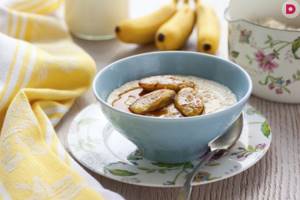
Corn porridge with banana topping “Unification” 0.5 tbsp. corn grits, 1 tbsp. milk, 10 g butter, 1 banana, 5-6 walnuts, 30 g brown sugar, ground cinnamon and salt - to taste
Boil corn grits, pour in milk, bring to a boil, remove from heat and add butter. For the topping, heat a frying pan, add a little butter, add cinnamon sugar and stir until the sugar melts. Place banana slices in syrup and fry on both sides. Add chopped walnuts, stir and remove from heat. Place corn porridge on a plate and top with banana topping.
Five simple lunches for schoolchildren that fit in a lunchbox
PASTA SALAD
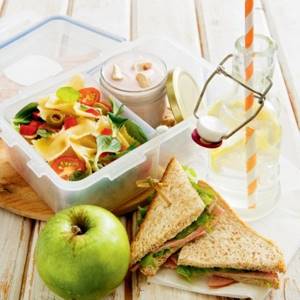
Boil the pasta (bows or horns are best) and transfer to a container. When the pasta has cooled a little, add cherry tomato halves, lettuce, chopped bell peppers, and olives. Season with olive oil and lemon juice.
BUN WITH SALAD
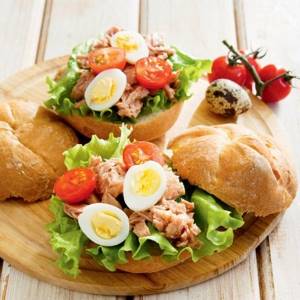
Cut a fresh bun (a bun with bran is healthier), crush the crumb a little or remove part of it by making a depression, lay out the filling, sauce and vegetables.
- With tuna
Mash pieces of canned tuna with a fork, add a little olive oil, lettuce, halves of quail eggs and cherry tomatoes. - With cutlet
Fry or steam a flat cutlet of turkey, chicken or ground fish. Place on a bun, adding a spoonful of good tomato sauce and slices of pickled or fresh cucumber. - With egg and smoked fish
Remove small bones from a piece of lean baked or hot smoked fish. Mash the fillet with a fork, sprinkle with lemon juice, place on a bun with lettuce, cucumber slices and boiled egg slices. Pack the buns in a container to prevent them from getting wrinkled and the filling from falling out. Don't forget to bring napkins!
CIABATTA OR MINI BAGUETTE WITH DELICIOUS FILLING
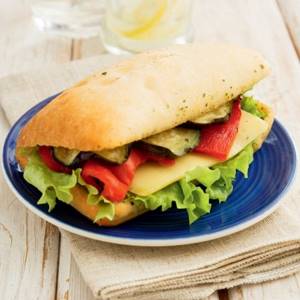
This option will appeal to teenagers: the sandwich will not be small and complex. Take note: 5 ideas with pita bread.
- With grilled vegetables and cheese
Brush cut bread with pesto sauce or homemade herb sauce (grind a bunch of herbs in a blender with olive oil, lemon juice and garlic), lay out slices of baked vegetables (peppers, eggplant) and add 1-2 pieces of delicious cheese and salad leaves. - With baked meat
Cut home-baked meat into thin slices, spread sweet mustard on the bread, assemble a sandwich by adding slices of fresh or lightly salted cucumber or tomato and lettuce leaves. - With salted salmon and curd cheese
Spread the bread with curd cheese, lay out slices of salted fish, boiled egg slices and lettuce leaves. - With feta cheese and tomatoes
Brush the bread with butter, add thinly sliced feta cheese, lettuce and tomato slices. - With Pear and Blue Cheese
Spread any delicious jam on the bread, top with thin slices of pear, blue cheese or soft goat cheese and lettuce.
PITA ROLL
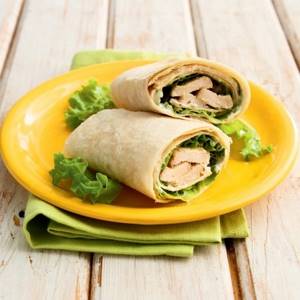
Lavash is an excellent product for preparing food to go. In the form of a roll, lavash ideally stores any filling. The long roll can be cut into pieces and stored in a container.
- With chicken breast
Unwrap the pita bread, spread with a thin layer of cream cheese, place green salad leaves, and thin slices of baked chicken breast on top. Roll it up. - With omelet and ham
Prepare a thin omelet from 1 egg in a frying pan or in the microwave. Unroll a sheet of pita bread, carefully place the omelette on top, add thin slices of ham and a little sweet mustard for a piquant taste. - With pesto and mozzarella
Coat the pita bread with pesto sauce, lay out slices of mozzarella or thinly sliced Adyghe cheese, add slices of tomatoes or baked vegetables. Wrap it up. - With processed cheese and baked chicken
Unwrap the pita bread, spread with a thin layer of processed cheese, arrange slices of bell pepper and chopped baked chicken fillet. Wrap it up.
SANDWICH + VEGETABLES AND FRUITS
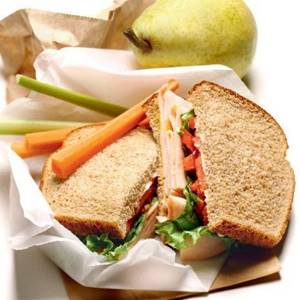
Children love sandwiches. If you prepare it from the right ingredients, such food moves from the fast food category to the homemade category. Replace regular white sandwich bread with grain bread. We refuse smoked store-bought meat in favor of oven-baked ham or turkey, and actively use homemade preparations - cucumbers, pickled peppers and sauce, if available. Aerobatics is to also use homemade mayonnaise! This recipe will make it much tastier and thicker than store-bought. Place the finished sandwich in a container and add some vegetables or fruits to it, fortunately in the fall we have access to any, and of better quality.
SOUP-PUREE
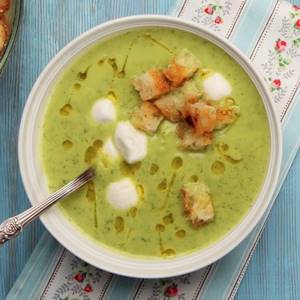
There is no way to heat up home-cooked food at school, so the only way to bring soup with you is a good 300ml mini thermos that can safely store soup, hot stew, dumplings or pasta with sauce. Choose a compact, unbreakable one that keeps food, if not hot, then guaranteed to be warm for 5-6 hours. We are sharing a recipe for an excellent creamy soup with broccoli and mozzarella; a large collection of creamy soups is here.
SAVE WITH BENEFITS!
- Don't buy pre-cut, bagged vegetables at the supermarket. Those that you wash, cut and put in a container are fresher and cheaper.
- Replace store-bought cookies and snacks with homemade cookies made from oatmeal or plain flour, with nuts and dried fruits. Healthy, tasty and cheaper than in the store.
- Instead of ready-made boiled-smoked ham, ham or sausage from the meat department of the store, use home-baked meat or poultry in sandwiches.
Oatmeal pancakes “Berry-Raspberry”
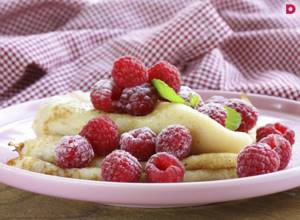
Oatmeal pancakes “Berry-Raspberry” 200 ml milk, 1 egg, 120 g oat flour, 1 tbsp. sugar, 1 tsp. baking powder, a pinch of salt, fresh or frozen raspberries (or any other berries), honey
Beat eggs with salt and sugar, pour in milk, add sifted flour and baking powder, mix with a whisk until smooth. Bake pancakes. Place berries on a pancake, add a few drops of honey, roll.
Salad “Elegant Bows”
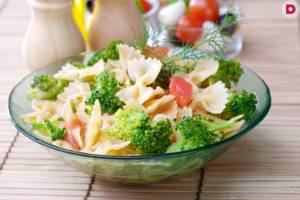
Salad “Elegant Bows” 80-100 g “Bows” pasta, 5-6 broccoli florets, a quarter of red bell pepper, 1 tbsp. frozen peas, 100 g ham or boiled beef, 2-3 cherry tomatoes, a pinch of grated cheese
Boil the pasta and rinse under cold water. Steam broccoli and peas and cool. Cut the pepper and ham into small cubes, add pasta, broccoli, peas and mix. Place the salad on a plate, sprinkle grated cheese on top and garnish with cherry slices.
What will the children be fed?
New rules for children's nutrition were introduced by federal law adopted this year. Now schools must feed children hot meals, post the daily menu on their websites, and also take into account information received from parents about their children’s health. In addition, two new Sanitary Regulations and Regulations were developed for the law. According to one of them, parents receive the right to control how meals are organized at the school where their child studies. For example, they can visit the catering unit to check what the children are fed and whether the canteen staff is wearing sanitary clothing. You can also find out whether the food is tasty by asking the children.
The second SanPiN describes in detail what the catering unit should be equipped with, how often schoolchildren should be fed, and how long the lunch break should last. There is also a sample menu for two weeks. For example, for breakfast, as a hot dish, a child can be given milk porridge, milk soup with pasta, an omelet, a rice casserole, cheesecakes, fish balls, meat or poultry balls, or boiled corn. You must also provide a drink, bread and dairy products for breakfast. And it is especially important, Deputy Chairman of the State Duma Committee on Education and Science Larisa Tutova told the Parliamentary Newspaper, that the document stipulates the requirement to ensure quality control and monitoring of hot meals so that the effectiveness of catering for students can be assessed. In addition, SanPiN places emphasis on developing a culture of proper nutrition in children, she noted.
Scrambled eggs with turkey “Like grandma’s”
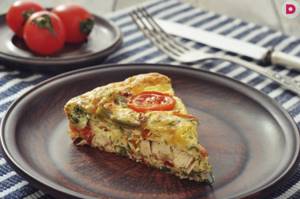
Scrambled eggs with turkey “Like grandma’s” 2 eggs, 150 g boiled turkey, 2-3 cherry tomatoes, 50 g green beans, salt and herbs - to taste, 1 tsp. vegetable oil
Pour oil into a small deep saucepan, add chopped turkey fillet, green beans and lightly fry. Add chopped tomatoes, eggs, salt, cover and cook over low heat until done. Remove from heat and sprinkle with chopped herbs.
Congratulations to all schoolchildren and their parents on the holiday of September 1! Bright new impressions, sincere children's smiles and only excellent grades!
Tips for parents: what to give a schoolchild for breakfast
I felt sorry for my schoolgirl daughter and tried to wake her up as late as possible: it would be better for her to sleep longer. What came of it? She didn’t have time to “swing up”, refused breakfast (what kind of omelet is there when her eyes are half-closed?!) and came to school sleepy and unhappy.
Pediatric physiologist Marina Ermolenko told me that it is necessary and important to wake up a child at least an hour before going out. Then breakfast will be successful, and the body will wake up for the start of classes.
The alarm clock can be set 5 minutes earlier than usual, then the student will have time to lie down and stretch. Then charging. It is important to very carefully and slowly stretch the muscles, warm up the joints, carefully tilt the head to the sides, tilt the body forward and to the sides, you can twist the shoulders, elbows, wrists, knees. Then washing, checking the briefcase, preparing clothes. And only then, about 40 minutes after getting up, breakfast.
“In order for your appetite to work up in the morning, it is important not only to wake up at least half an hour before meals, but also not to overeat at night, let the dinner be light,” advises nutritionist Elena Solomatina. - Don’t push your child to eat, try to prepare breakfast that is not only tasty, but also beautiful. Another useful tip is to give the student a drink of warm water immediately after waking up. It will help awaken enzymes and prepare the body for food intake. Dropping a little lemon juice into water will improve your appetite.
WHAT SHOULD YOU EAT...
In the morning, a schoolchild needs building material (for physical activity) and energy (for brain activity).
Protein and calcium are important for bone growth. And here cottage cheese, yogurt, milk, cheese are indispensable. An excellent breakfast can be casseroles, cheesecakes, and lazy dumplings. You can add sour cream, berries, fruits to cottage cheese - it will be both tasty and healthy. And the child will be full for at least 3 hours.
Porridge is energy. Oatmeal, buckwheat, millet, enveloping, protect the gastrointestinal tract, and also fill with energy for a long time, because they contain slow complex carbohydrates (the child will be full after porridge for 2-3 hours). Porridges are rich in B vitamins, which are important for brain activity and the nervous system. You can add fruits, berries, jam, honey to the porridge (if there are no allergies).
BUT! Oatmeal causes severe flatulence in many people, so if your child gets bloated after eating oatmeal, it is better to replace it with harmless buckwheat.
BUT! After rice porridge you will want to eat very quickly. It gives energy, but not for long. But if the first lesson is physical education, rice porridge is the best breakfast. And after physics lesson you can have something to eat.
Eggs are easily digestible, provide protein for growth, and a student will be full after an omelet for quite a long time. In addition to protein, eggs contain choline, which is important for brain activity, for so-called quick thinking. So before the test, before the report and the survey - scrambled eggs, poached eggs, Benedict, omelet and just a sandwich with a hard-boiled egg.
By the way, the healthiest dish is a soft-boiled egg. The white should be firm and the yolk slightly soft.
A great idea for schoolchildren with a sweet tooth is an omelette with dried fruits. This is no longer just breakfast, but a real dessert!
Bread is better than whole grain. It contains the necessary fiber and will provide a lot of energy for a long time. By the way, a hot sandwich - with cheese, tomato, or chicken - would be an excellent breakfast.
BUT! If a child has problems with the intestines or stomach, then whole grain bread will not work; dried white bread is better.
Cocoa. If it is real, made from cocoa beans, and not from powder with flavorings and flavor enhancers, then it will bring many benefits - it will awaken and saturate the brain, give energy, and the taste will be pleasant.
…AND WHAT TO AVOID
You should not give your student anything in the morning that can cause a sharp rise in blood glucose. That is, the child will quickly wake up, the energy will be in full swing, but very soon it will end, the student will already be sleepy and hungry by the time he comes to class. This is for example:
- White bread,
- semolina porridge (it contains almost no vitamins and will very quickly make you hungry),
- breakfast cereals, cereals - corn, wheat, balls, stars, dolphins - all this is made from flour, which means their effect is the same as that of white bread: a minimum of benefits and energy. In addition, the flakes are usually fried in palm (harmful) oil, and a lot of sugar and flavorings are added to them;
- sausage (this is not the healthiest product at all),
- sweets - jam, chocolate spread, peanut butter. All sweets will sharply raise the blood sugar level, and then it will fall, and the child will be hungry and sleepy;
- instant cereals from sachets (everything useful from them, as in flakes, is removed during processing).
BY THE WAY
Cinnamon, vanilla, lemon, orange, chocolate - these flavors awaken your appetite.
TAKE IT WITH YOU!
This can be put in your briefcase for a snack.
- Sandwich made from whole grain bread with cucumber, lettuce, boiled chicken, boiled meat, turkey (wrapped in foil).
- Cheesecakes or a piece of casserole.
- Nuts.
- Dried fruits.
- Banana, apple.
- Yogurt in a bottle.







